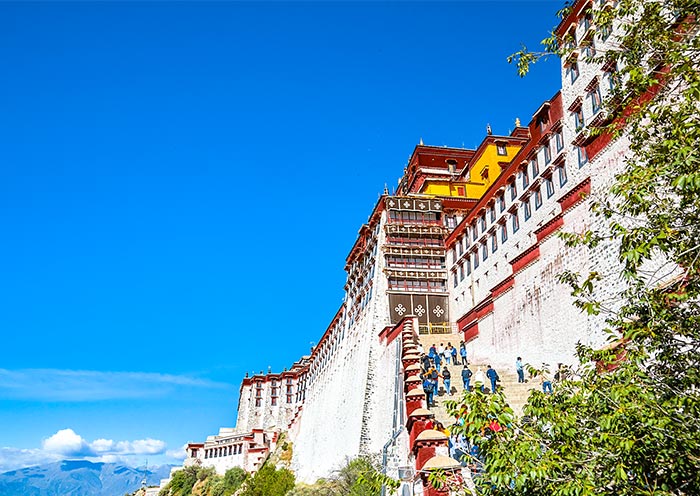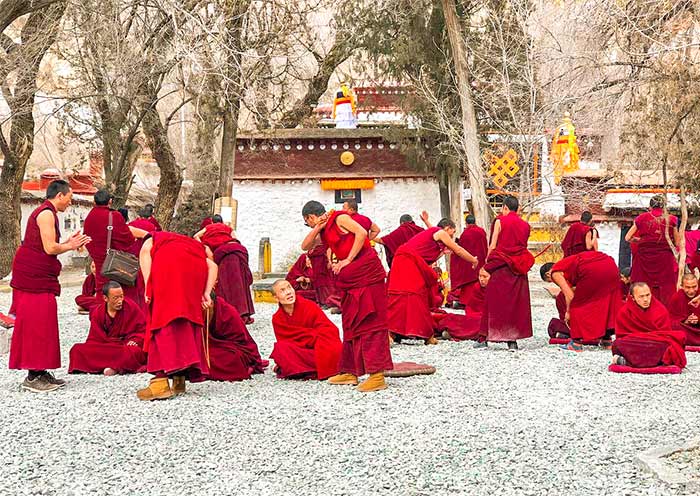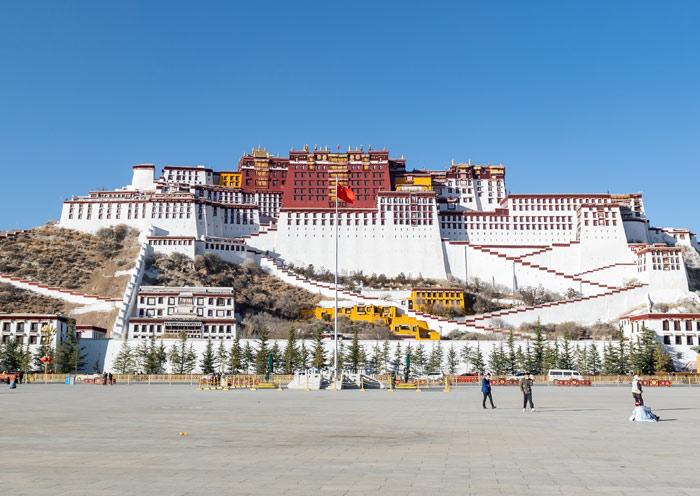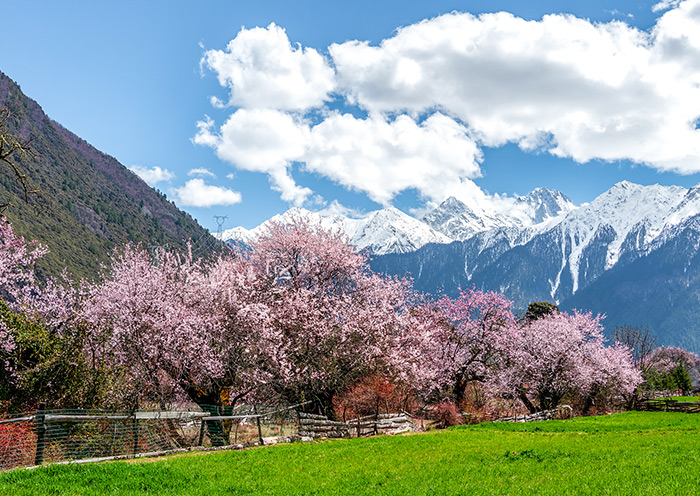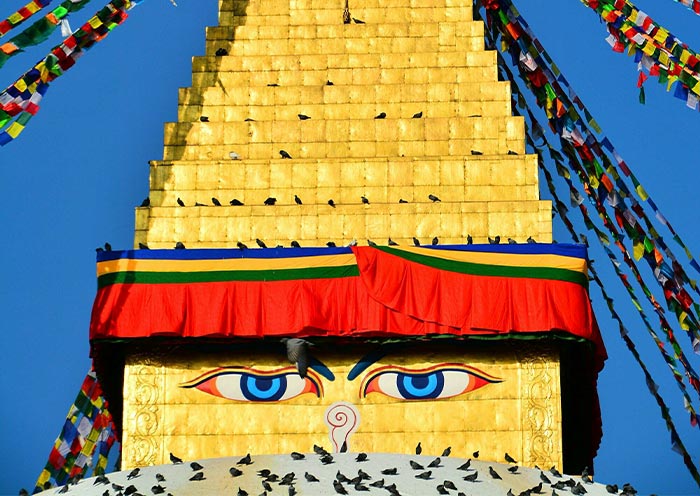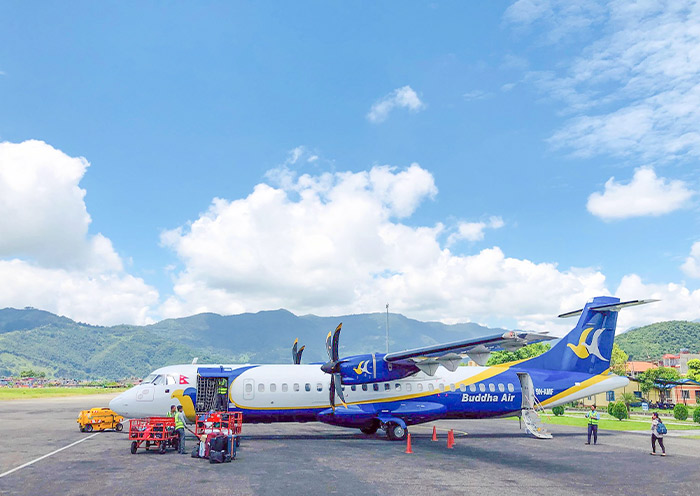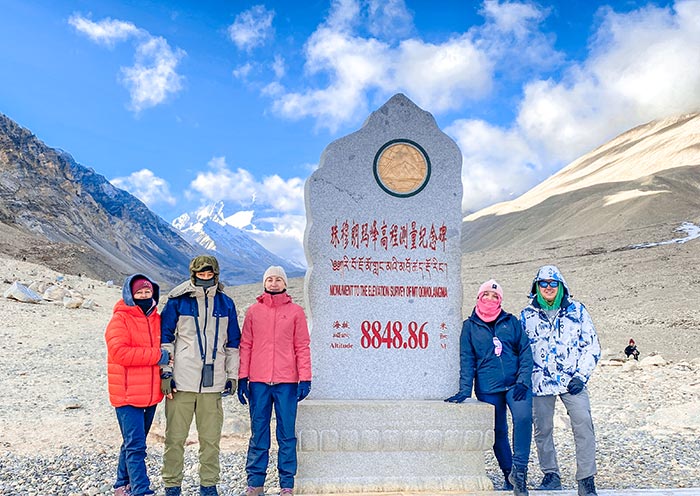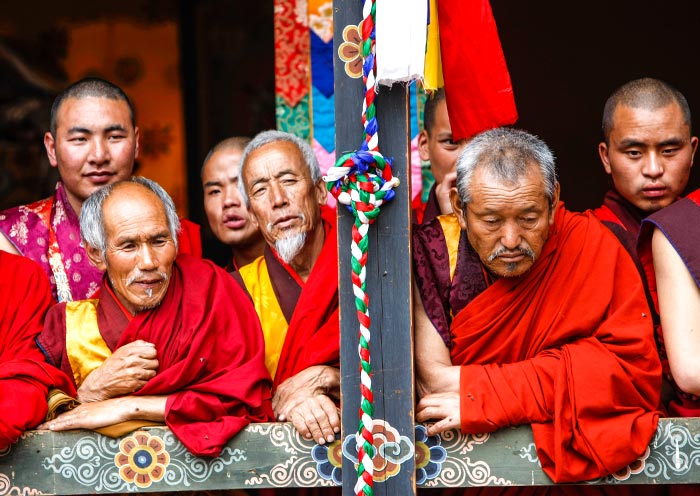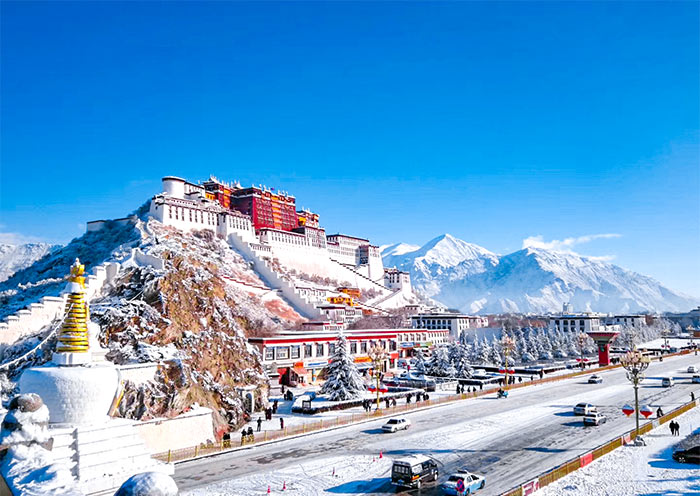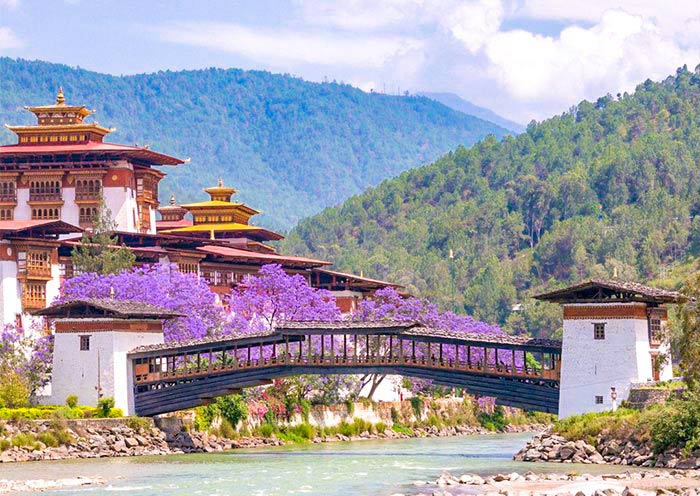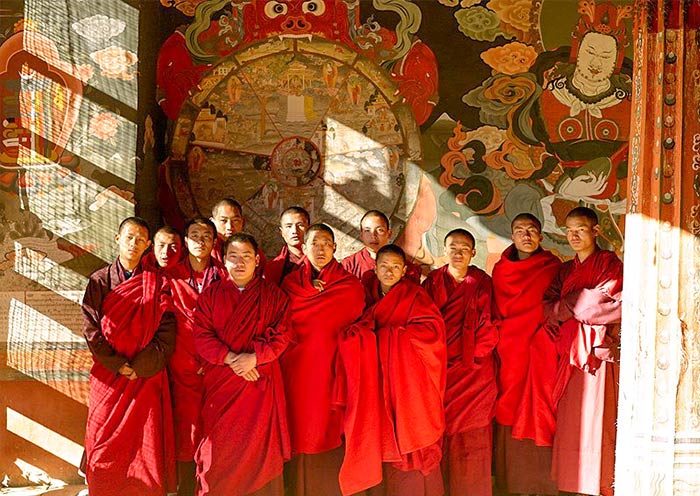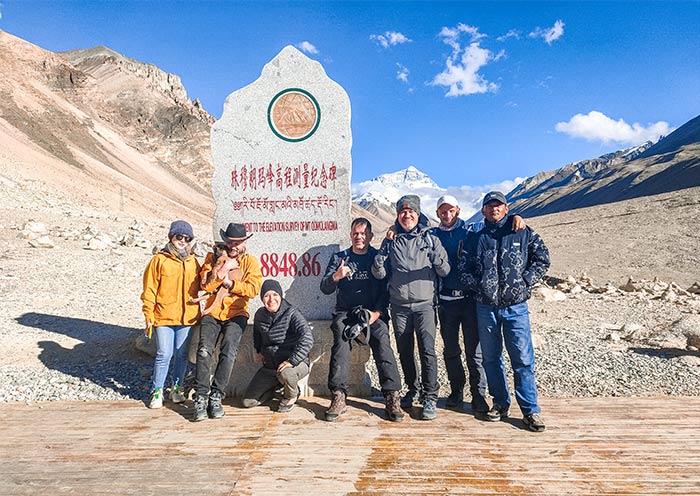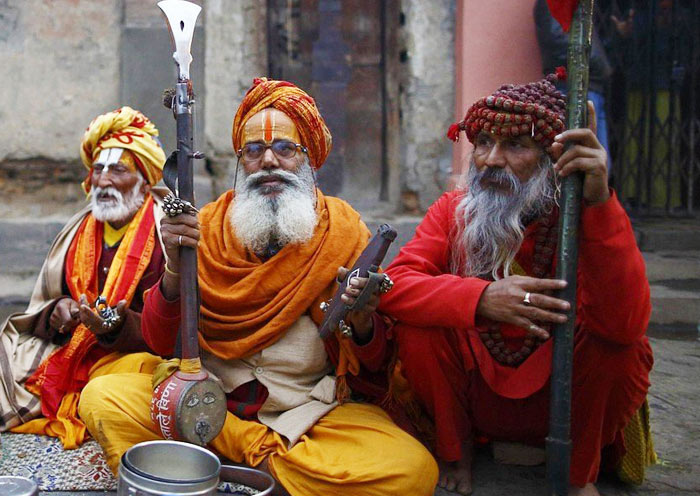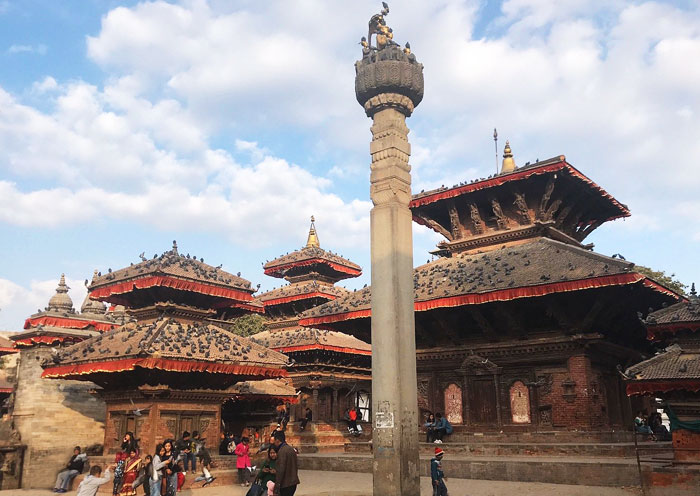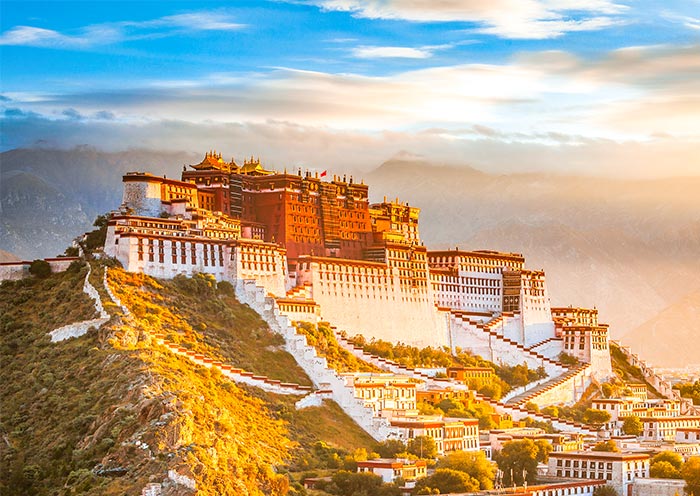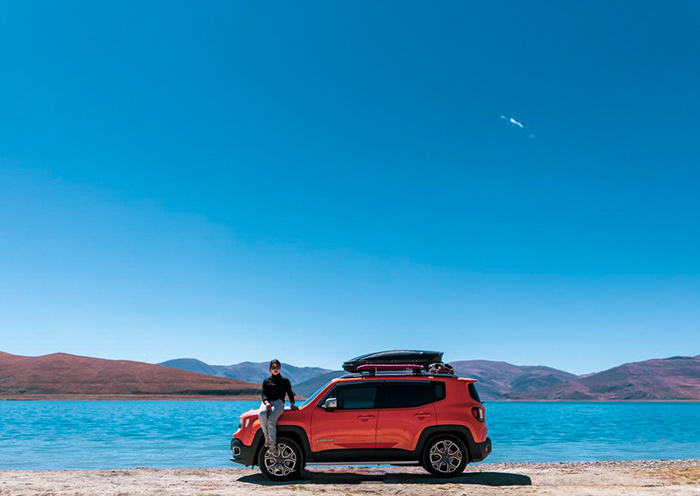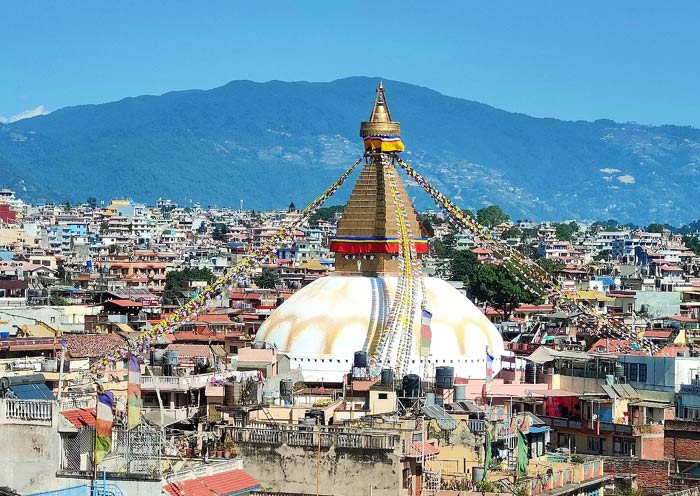Kathmandu to Lhasa Distance
Kathmandu is the capital city of Nepal, a landlocked country in South Asia. It is located in the Kathmandu Valley, a fertile basin surrounded by the Himalayas. It is known for its rich history, cultural heritage, and as a gateway to the Himalayas.
Lhasa is the capital city of Tibet Autonomous Region, China. It is situated in the Tibetan Plateau, a high-altitude region known for its stunning landscapes and unique culture like the Potala Palace and Jokhang Temple.
The distance from Kathmandu, Nepal, to Lhasa, Tibet, is approximately 1,200 kilometers (about 750 miles) if you are traveling by road. The journey typically takes around 2 to 3 days, depending on the route and travel conditions. If you choose to fly, the direct flight distance is about 600 kilometers (around 370 miles), with flight times generally ranging from 1.5 to 2 hours.

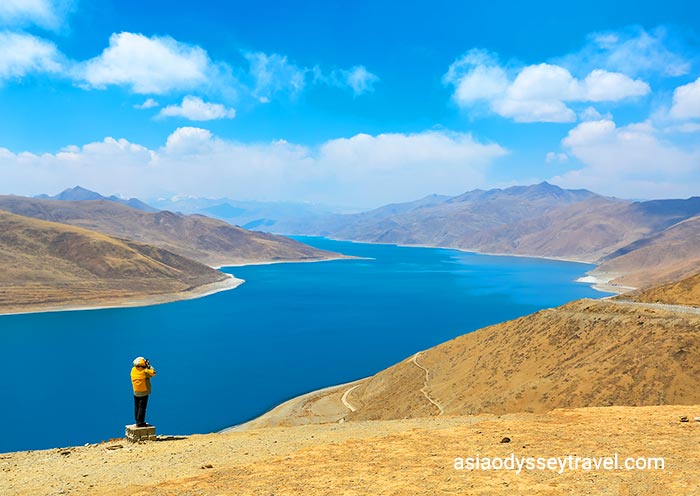
Kathmandu to Lhasa Flight: Facts & Itinerary
Kathmandu to Lhasa Direct Flight
Direct flights between Kathmandu and Lhasa are available daily, with a flight duration of approximately 1 hour and 20 minutes. This route is the only international flight to Tibet, offering a convenient and scenic way to travel between Nepal and Tibet, China.
- Flight Duration: 1.5 hours
- Flight Frequency: Only 1 direct flight (Himalaya Airlines) on every Monday
- Flight Cost: $500-1000
- Scenery along the ride: Panoramic views of the Himalayan peaks.
Taking a direct flight from Kathmandu to Lhasa is the quickest way to reach Tibet. This option is ideal for those with limited time or those who prefer a faster and more convenient mode of transportation. However, keep in mind that flying directly to Lhasa may increase the risk of altitude sickness due to the rapid ascent. It is essential to allow time for acclimatization upon arrival.
Departure Airport: Tribhuvan International Airport (KTM)
Located in Kathmandu, Nepal, this is the primary international airport serving the country. It is well-connected to major cities worldwide and offers various transportation options, including taxis, buses, and private car services.
Arrival Airport: Lhasa Gonggar International Airport (LHB)
Situated approximately 60 kilometers (37 miles) southwest of Lhasa city, this airport serves as the gateway to Tibet. Upon arrival, you can reach Lhasa city by taxi, bus, or private car.
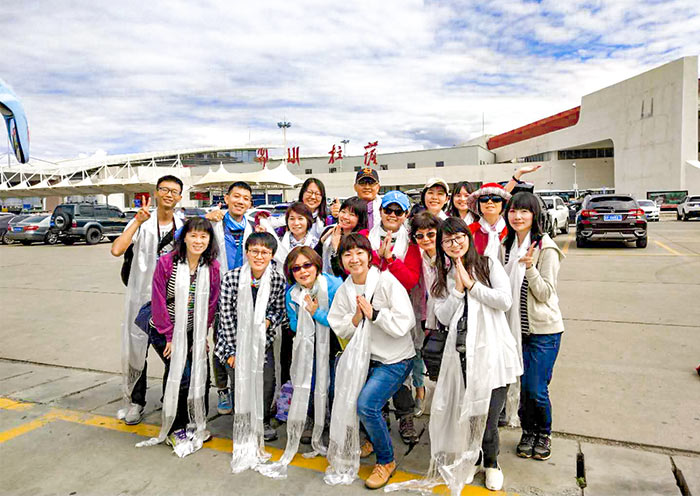
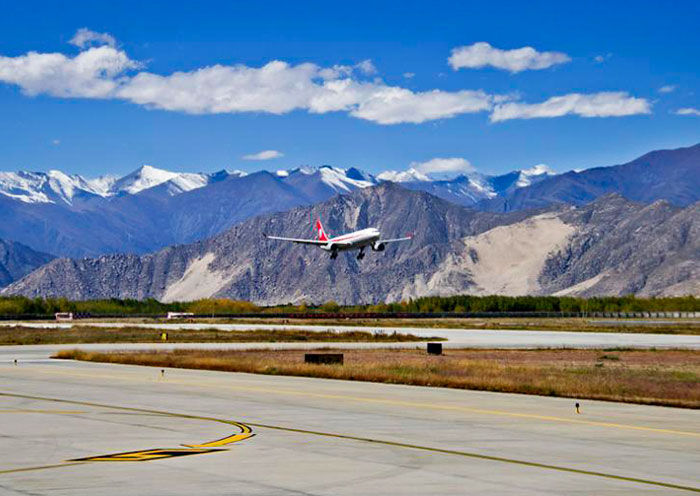
Other Flight Options:
While direct flights are the most convenient way to travel between Kathmandu and Lhasa, there are also indirect options involving a stopover in a Chinese city like Chengdu or Chongqing. These flights may offer more competitive fares but involve longer travel times.
Kathmandu to Lhasa Flight Itinerary
Option One: Departure Tibet to Chinese Mainland
Day 1: Fly from Kathmandu to Lhasa and acclimatize to the high altitude.
Day 2-3: Visit iconic sites like the Potala Palace, Jokhang Temple, and Barkhor Street. Sera Monastery, and Drepung Monastery.
Day 4: Take a scenic road trip from Lhasa to Shigatse, exploring Yamdrok Lake, Karola Glacier,Tashilhunpo Monastery
Day 5-6: Continue the journey to Mount Everest Base Camp, where you can witness the majestic peak up close and enjoy the breathtaking views of the Himalayas.
Day 7-8: Return to Lhasa. Spend time exploring Tibetan markets and immersing yourself in the local culture.
Day 9: Departure from Lhasa, take a Tibet Train or flight to Chengdu, Xian, Xining, or Beijing.
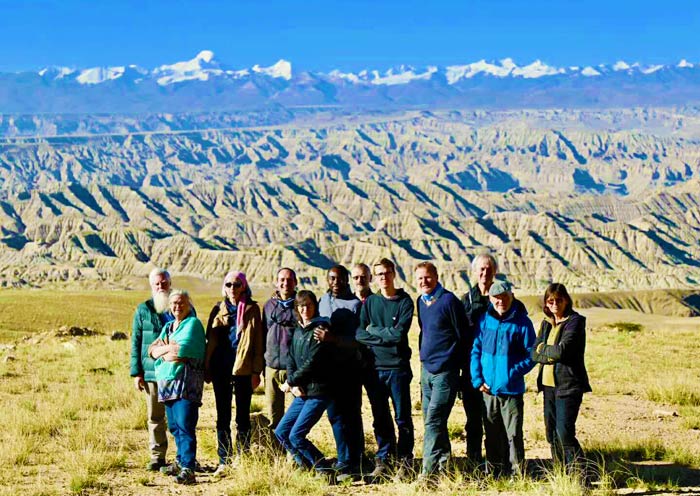
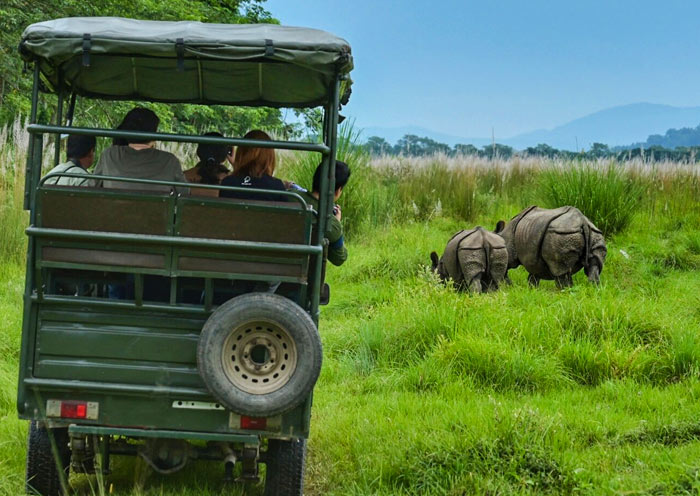
Option Two: Departure Tibet to Nepal
Day 1: Fly from Kathmandu to Lhasa and acclimatize to the high altitude.
Day 2-3: Visit iconic sites like the Potala Palace, Jokhang Temple, and Barkhor Street. Sera Monastery, and Drepung Monastery.
Day 4: Take a scenic road trip from Lhasa to Shigatse, exploring Yamdrok Lake, Karola Glacier,Tashilhunpo Monastery
Day 5: Continue the journey to Mount Everest Base Camp, where you can witness the majestic peak up close and enjoy the breathtaking views of the Himalayas.
Day 6: Drive to Jilong, where you can travel to Nepal by overland
Day 7: Entering Nepal from Jilong Port, then you’ll spend whole day to arrive in Kathmandu.
Kathmandu to Lhasa by Road: Facts & Itinerary
The only land border crossing for foreign travelers between Nepal and Tibet is the Gyirong Port, located about 30 kilometers (approximately 19 miles) from the town of Gyirong in Tibet.
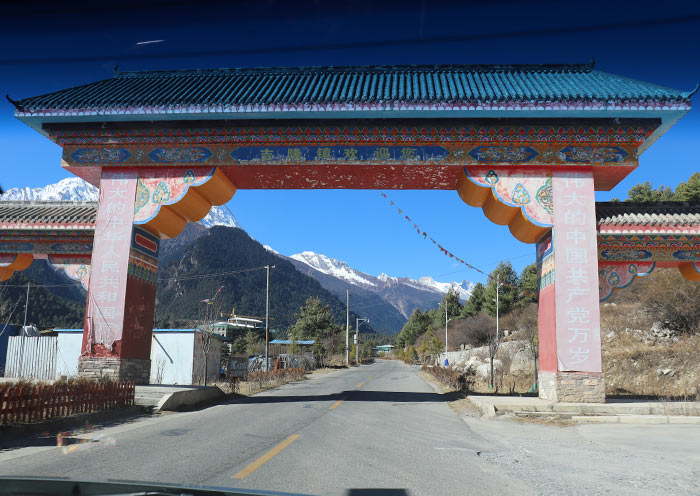
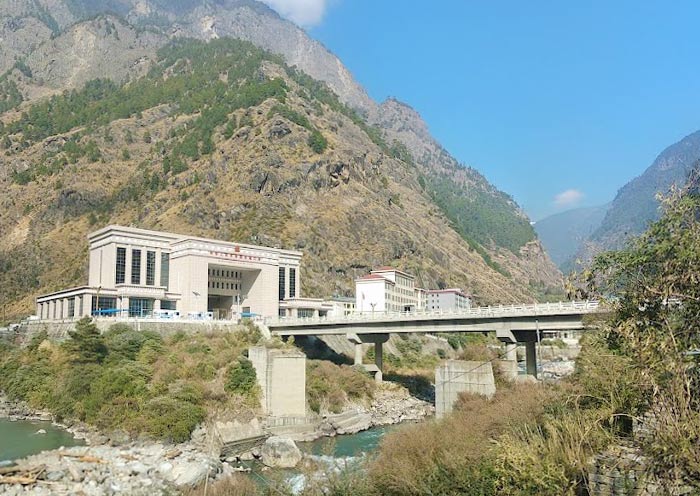
Kathmandu to Lhasa Friendship Highway Facts:
The Friendship Highway, also known as the Sino-Nepal Highway, connects Kathmandu and Lhasa, offering a scenic and adventurous route. Along the way, you'll witness breathtaking Himalayan landscapes, including towering mountains, crystal-clear lakes, and ancient monasteries. This road trip typically includes acclimatization stops and visits to notable attractions such as Everest Base Camp and the historic cities of Shigatse. Traveling by road allows you to experience the gradual transition from the lush valleys of Nepal to the vast plateaus of Tibet.
- Road Route: The main route is Lhasa - Shigatse - Tingri - Gyirong - Kathmandu.
- Road Length: The total distance of the journey is about 1,200 kilometers (750 miles).
- Road Trip Duration: The trip typically takes 3 to 4 days.
- Best Time to Travel: The ideal months for this journey are April to June and September to October. During these periods, the weather is generally favorable. In contrast, the roads in Nepal can be poorly maintained; summer can be muddy with risks of landslides, while winter presents cold conditions with snow and ice on the roads.
Kathmandu to Gyirong
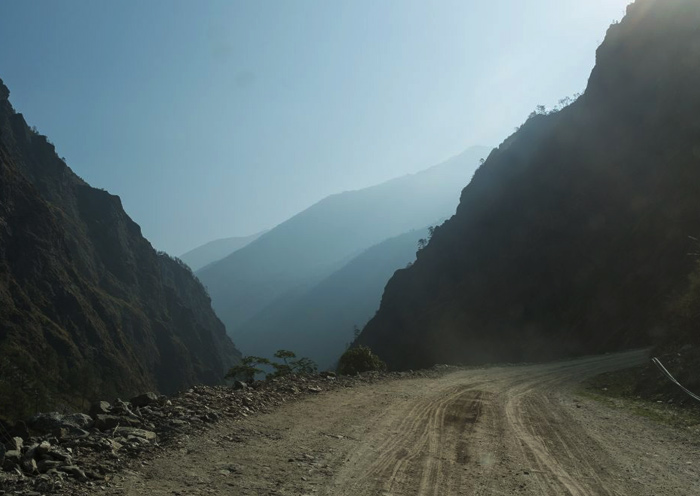
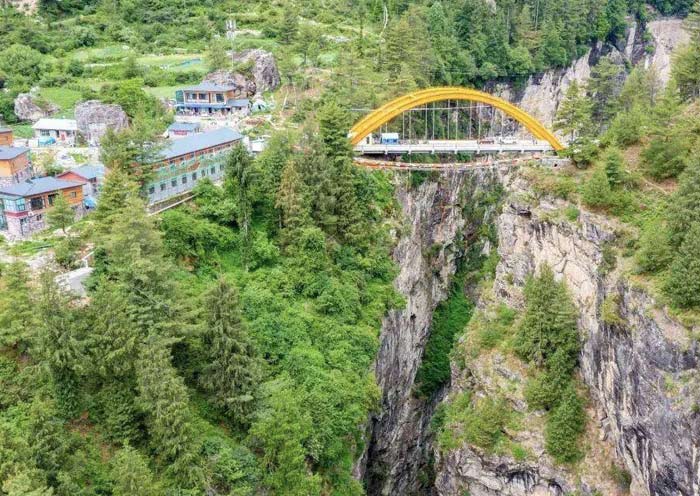
Traveling from Kathmandu to Gyirong covers a road distance of about 140 kilometers, which typically takes around 6 to 8 hours. The road conditions are narrow and winding, offering a picturesque view of low-altitude canyon hills along the way.
Gyirong to Lhasa
Once you reach Gyirong, the journey to Lhasa stretches approximately 900 kilometers. This leg of the trip generally takes 2 to 3 days, with well-maintained, paved roads providing a smooth ride. As you ascend, the scenery transforms into the breathtaking high-altitude plateau, showcasing magnificent and majestic landscapes that highlight the beauty of Tibet.
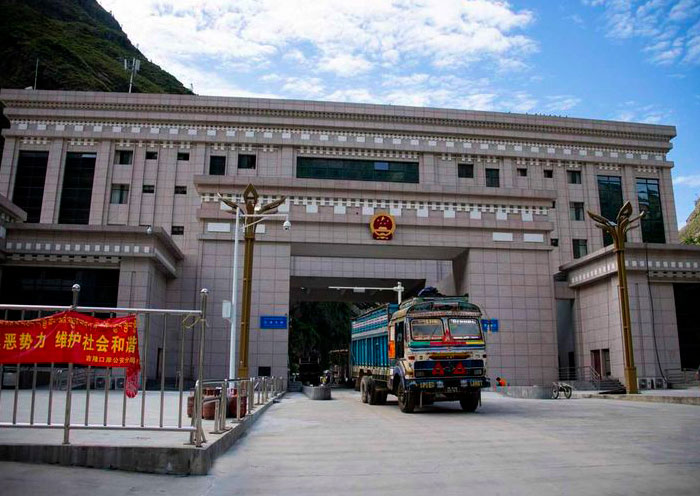
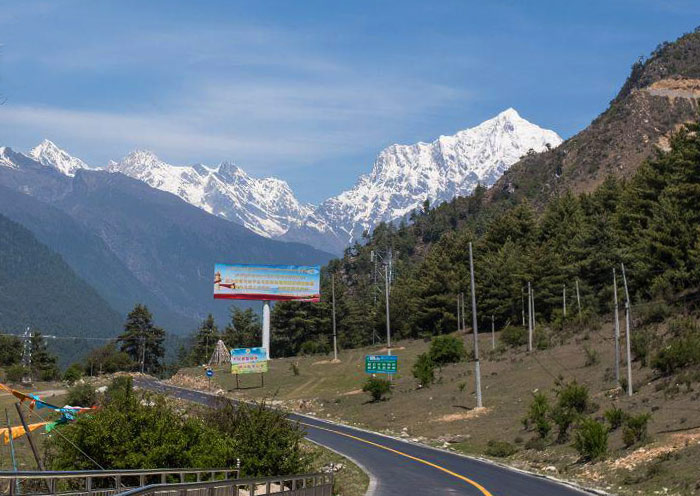
Kathmandu to Lhasa Overland Itinerary
Day 1: Travel from Kathmandu to Rasuwagadhi, stay overnight near the border.
Day 2: Rasuwagadhi to Gyirong via the Friendship Bridge, stay overnight in Gyirong Town.
Day 3: Continue your road trip to Everest Base Camp in Tibet, visiting the Rongbuk Temple
Day 4: Drive from EBC to Shigatse, visiting the Tashilhunpo Monastery.
Day 5: Continue the journey to Lhasa via Gyantse, admiring the amazing Yamdrok Lake and Karola Glacier. Finally, you arrive in Lhasa.
Day 6-7: Visit iconic sites like the Potala Palace, Jokhang Temple, and Barkhor Street. Sera Monastery, and Drepung Monastery.
Day 8: Depart from Lhasa.
Kathmandu to Lhasa Train - Under Planning
China is considering the construction of a railway line connecting Lhasa and Kathmandu. Currently, the railway section from Lhasa to Shigatse has been completed. The train journey from Lhasa to Shigatse takes about 2.5 hours, with 2 daily departures, significantly reducing the travel time between the two cities.
In the near future, it is possible that you will be able to fulfill your dream of traveling by train from Kathmandu to Lhasa. This development would provide a more convenient transportation option for tourists, allowing them to explore the beautiful landscapes and rich cultures between Nepal and Tibet with greater ease.
Kathmandu to Lhasa Bus - Not Accessible in Tibet
Foreign visitors can only take a bus from Kathmandu to Rasuwagadhi, which is the border crossing into Tibet. Once you arrive in Tibet, it is mandatory for foreign travelers to join a guided tour with an official guide and driver, as required by local policy.
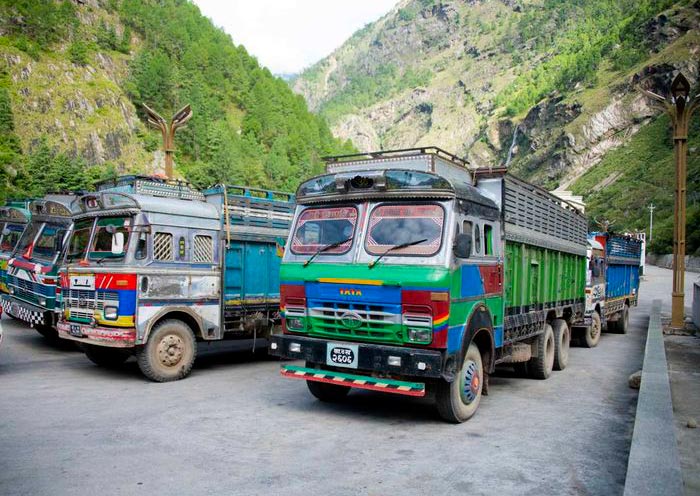

Importantly, you must obtain a Tibet Travel Permit before heading to Tibet; this is typically handled by a travel agency. Without this permit, you will not be allowed to enter Tibet, so it's essential to arrange it in advance to ensure a smooth journey.
Permits You Need When Travel from Kathmandu to Lhasa
1. China Tourist Group Visa:
When travelling from Kathmandu to Lhasa, you will first need to obtain a China Tourist Group Visa from the Chinese Embassy in Kathmandu. This visa is different from a regular Chinese visa and can only be obtained through a registered travel agency, such as Asia Odyssey Travel (AOT). With this China Tourist Group Visa, you must travel to Tibet in a group with a minimum of 4 people, who need to take the same flight leaving China.
2. Tibet Travel Permit (TTP):
The Tibet Travel Permit is the primary permit required for traveling to Tibet. It is issued by the Tibet Tourism Bureau and is necessary for foreign travelers. You cannot apply for this permit individually. To obtain this permit, you must book a tour with a registered travel agency in Tibet (AOT). We will handle the application process on your behalf, and you need to provide your passport and other necessary documents with us.
3. Alien's Travel Permit (ATP):
The Alien's Travel Permit is another permit required to travel to certain restricted areas within Tibet. It is issued by the Public Security Bureau (PSB) in Tibet. We will obtain this permit if your itinerary includes restricted areas like Everest Base Camp or Mount Kailash.
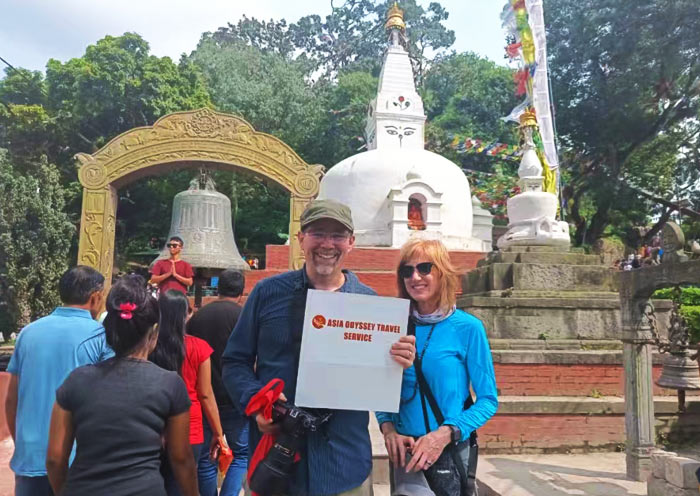
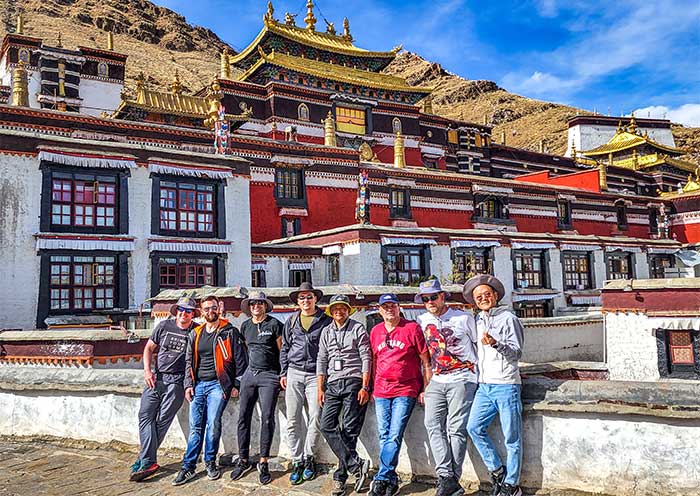
How Much Does it Cost for Nepal to Tibet Tour
1. Nepal Budget:
Nepal generally offers lower travel costs compared to Tibet. In Nepal, you have the flexibility to explore independently and control your expenses. On average, a budget of around $50 to $100 per day should be sufficient to cover accommodation, meals, transportation, and sightseeing activities. However, keep in mind that luxury accommodations, high-end dining, and certain adventure activities may increase your expenses.
2. Tibet Budget:
Traveling in Tibet requires joining a guided tour, as independent travel is not permitted. Due to the mandatory guided tour requirement, the overall expenses in Tibet are generally higher compared to Nepal. On average, you can expect to spend approximately $100 to $150 per day for a comprehensive tour package in Tibet. This budget covers accommodation, meals, transportation, and necessary permits.
For first-time travelers to Nepal and Tibet, opting for a Nepal Tibet Tour Package is highly recommended. These packages offer seamless travel arrangements, including flights, transfers, accommodations, and guided tours, saving you time and effort in planning. Choosing a reputable tour operator ensures a well-organized and guided journey, allowing you to immerse yourself in the cultural marvels and natural beauty of Nepal and Tibet with peace of mind.
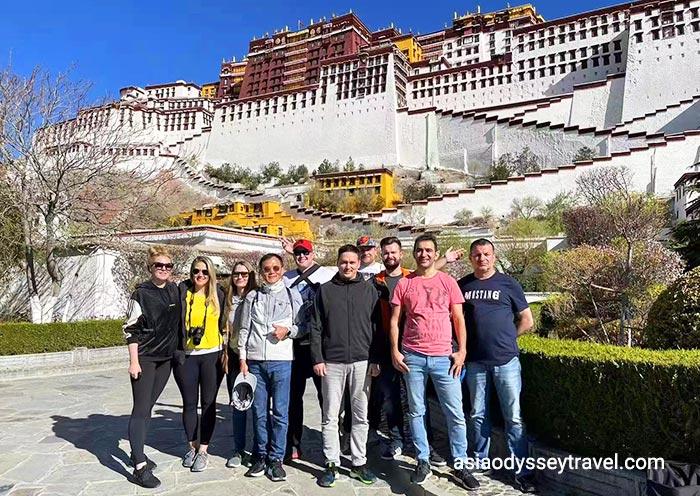
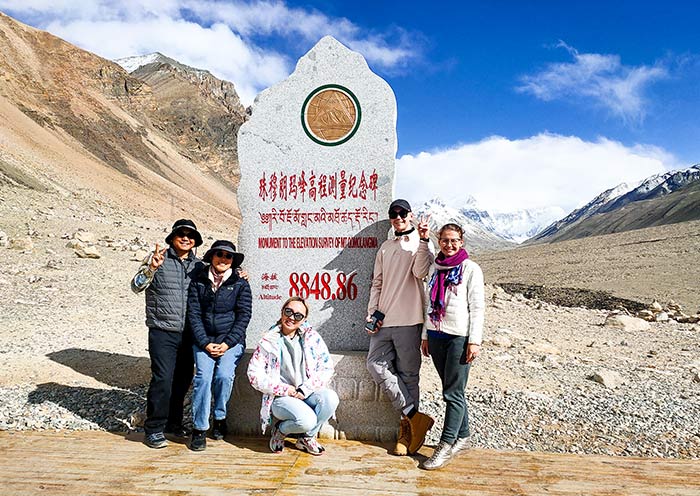
What to Pack for Kathmandu to Lhasa Tours
When packing for a journey through Nepal and Tibet, it's essential to consider the varied climates and activities you will encounter. Here is a essential list to guide you:
- Layered Clothing: Bring a mix of lightweight and warm layers to accommodate fluctuating temperatures.
- Insulating Layers: Fleece jackets or down vests for colder high-altitude areas.
- Waterproof Jacket: A good quality, breathable rain jacket to protect against rain and wind.
- Trekking Pants: Convertible and quick-dry materials are preferable.
- Long Sleeve Shirts: To protect from the sun and for cultural sensitivity in monasteries and temples.
- Thermal Underwear: Useful for chilly nights, especially in Tibet.
- Warm Hat and Gloves: For colder temperatures in the mountains.
- Sun Hat or Cap: To protect against the intense sun at high altitudes.
- Footwear: Waterproof, sturdy trekking boots for hiking and comfortable shoes for casual walks.
- Backpack: A comfortable daypack for excursions and a larger backpack or duffel for your main luggage.
- Sunglasses: UV-protection sunglasses for the strong high-altitude sun.
- Scarf or Buff: For wind and dust protection, especially in the dry Tibetan Plateau.
Given the strict baggage limits on flights to and within Tibet, it's advisable to pack as light as possible while ensuring you have all essentials. Always check the luggage restrictions of your chosen airline before flying. Remember to adjust your packing list based on the specific activities you plan to do, the time of year you are traveling, and the latest travel regulations for both Nepal and Tibet.

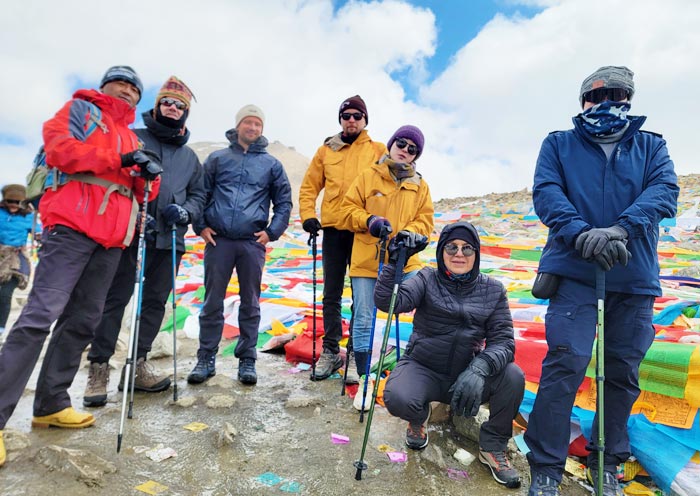
Prepare to Prevent Altitude Sickness from Kathmandu to Tibet
Kathmandu is situated at an elevation of 1,400 meters, while Tibet is a high-altitude area with an average elevation exceeding 4,000 meters. At altitudes above 3,000 meters, individuals can start experiencing symptoms of altitude sickness, such as dizziness and headaches.
If you choose to travel overland from Kathmandu to Lhasa, there will be a substantial change in altitude. It takes approximately three days to go from Kathmandu at 1,400 meters to the border town of Gyirong at 2,700 meters, and then to Everest Base Camp at 5,200 meters. If you opt for a flight, the altitude will increase from 1,400 meters to 3,700 meters in just a few hours. Regardless of the mode of transportation, you may experience symptoms of altitude sickness during the initial period. However, these symptoms usually subside within approximately two days as your body adjusts to the high altitude, so there is no need to overly worry.
As an experienced and professional local travel agency in Tibet, we design our itineraries following the principle of gradual ascent, allowing ample time for acclimatization. Additionally, our tour vehicles are equipped with oxygen cylinders for your convenience to alleviate symptoms. Our local Tibetan guides have undergone professional training and will be there to assist you. If you experience any symptoms of altitude sickness, please inform your guide immediately.
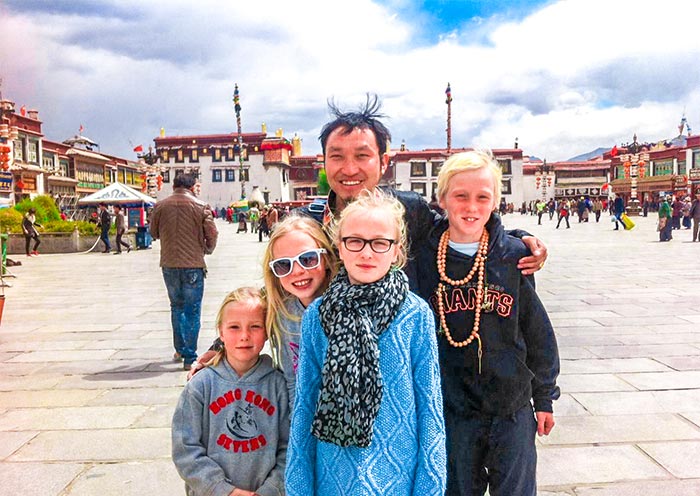
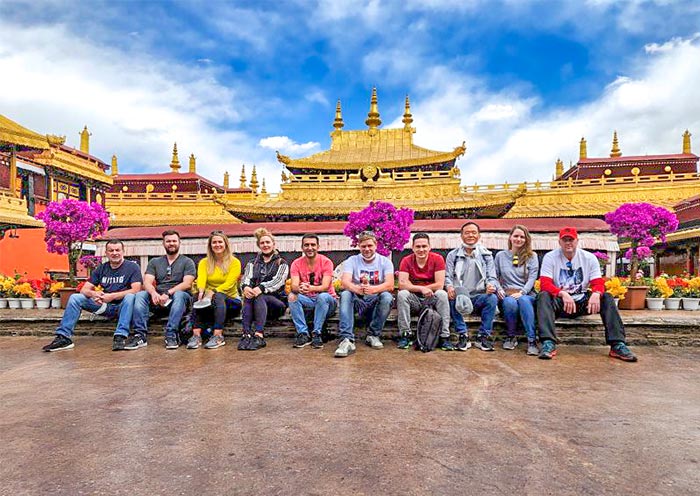
If you have any questions about this article, please contact us by submitting the following form and we'll immediately get back to you.

